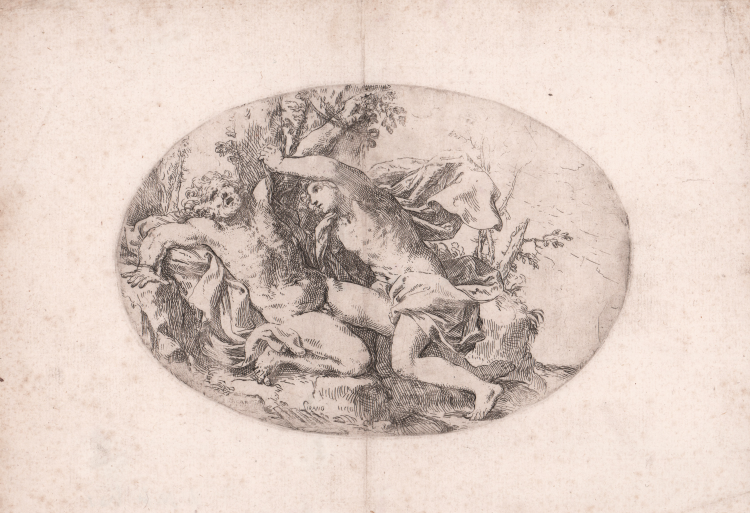




| Reference: | S172170 |
| Author | Giovanni Andrea Sirani |
| Year: | 1640 ca. |
| Measures: | 221 x 165 mm |



| Reference: | S172170 |
| Author | Giovanni Andrea Sirani |
| Year: | 1640 ca. |
| Measures: | 221 x 165 mm |
Etching, 1640 circa, signed on lower centre plate.
Magnificent work printed on contemporary laid paper without watermark, uncommon wide margins and signs of central fold, otherwise in excellent condition.
A very rare work, designed by the Bolognese artist himself.
Giovanni Andrea Sirani started working in the workshop of Giacomo Cavedone and afterwards he went to Guido Reni’s, becoming his most faithful pupil and the heir of the majority of his drawings. Sirani was the meekest among Guido’s pupils, who often were often very greedy and tried to make out some money on their master by selling minor works that were passed off as originals. Showing his skills as a drawer, Sirani gained Reni’s favour who often commissioned him to copy the preparatory drawings on the canvases.
|
Bartsch XIX, p. 149, 2
|
Giovanni Andrea Sirani (Bologna 1610 -1670)
|
Father of Elisabetta Sirani, Giovanni Andrea trained initially with Giacomo Cavedone, then worked in the studio with Guido ReniPupil and became his principal assistant. Adherence to formal models of Guido Reni had entailed the risk of the dissolution of his painting in the areas of undifferentiated culture of Reni, hence perhaps the lack of information from the historiography on its activities, its production and its clients. He continued to work until the death of his daughter Elizabeth, in 1665.
|
|
Bartsch XIX, p. 149, 2
|
Giovanni Andrea Sirani (Bologna 1610 -1670)
|
Father of Elisabetta Sirani, Giovanni Andrea trained initially with Giacomo Cavedone, then worked in the studio with Guido ReniPupil and became his principal assistant. Adherence to formal models of Guido Reni had entailed the risk of the dissolution of his painting in the areas of undifferentiated culture of Reni, hence perhaps the lack of information from the historiography on its activities, its production and its clients. He continued to work until the death of his daughter Elizabeth, in 1665.
|